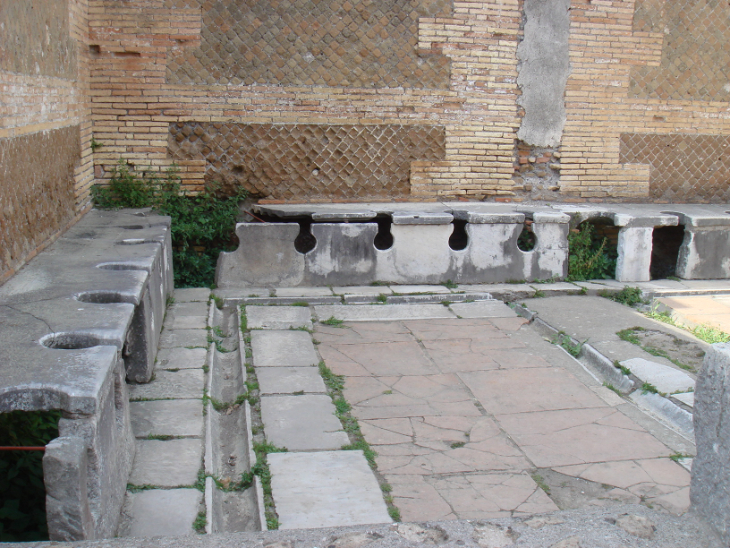
Did you know that toilets are made of porcelain? Crazy to think that the same material we use to create fine, expensive china is used for our not-so-glorious moments spent strictly alone. The reason is that nothing quite compares to it when it comes to sanitation. Which is of top priority, your afternoon savvy tea or what comes after?
But that wasn't always the case. Toilets weren't always made of porcelain and weren't always that sanitary, but one thing is for sure- they have always been there, accompanying humankind since the cradle of civilization - Mesopotamia. Today we're taking a deep dive into the past, where we will inspect the toilets that made history.
The Egyptians live in an arid desert to this day. Water is scarce, while sand is found in heaps. If you open up a map, you can see that most cities are centered around the Nile, a river that runs across the country. The Ancient Egyptians took their sanitation very seriously, so their solution was a sand-filled cesspit with a limestone seat. Much like a cat's litter box, isn't it?
This was also a luxury saved only for the rich who had servants to clean up after them. The rest had a wooden stool with a hole in it, which sat over a container of sand that would be emptied regularly.
 Source/ Public Toilets
Source/ Public Toilets
The very first flush was manual, and it was invented around 1700 BC. Completely independently of each other, two different societies (the Minoans and the Indus Valley civilization) came up with the thought to flush away waste with water. The toilet seats themselves were wooden, and they were situated over an open tunnel of flowing water. Their contents were flushed either with water that accumulated on the roof of the home or using water that came from a well. The stream led to the sewage.
Medieval castles boasted of having the toiled chute, more delicately called 'the garderobe.' One would sit about his business, and said business would just fall down with the force of gravity to the moat that surrounds the castle. The opening of the chute looked something like this:

But the real star toilet of Medieval times was invented in 1596 by Sir John Harrington, godson of Queen Elizabeth I of England. A controversial figure, he was exiled from the court due to his risqué poetry and critical political writings. In one of his writings, today interpreted as a criticism of the monarchy, he describes how the ruling class should be flushed away and replaced.
He goes into great detail, describing how the mechanism worked. As it turns out, he had a flushing toilet at home, designed according to his critical literature. This mechanism worked so well that the subject of criticism, Queen Elizabeth herself, asked Harrington to install a flushing toilet in her palace, and he did.
The real star of our article is the patent made by Scottish inventor Alexander Cumming. In 1775, he improved Harrington's flushing toilet so that it would include an S-bend or a U-bend. You know, the curved pipe at the bottom of the loo! It contains water at all times, which acts as a stopper for sewage gasses, trapping them in the pipes and preventing them from seeping into our homes.
About a century later, Thomas Crapper would take that invention and market it to the point of opening a flush toilet showroom. This led to new legislation calling for all new buildings within the UK to install an indoor toilet.
George Jennings, a British sanitation engineer, invented the penny-per-flush toilet for the poor folk who couldn't afford a toilet at home. This caught up pretty well, and even today, you can see public restrooms asking for their dime throughout the world.
But for California State Assemblywoman March Fong Eu, this was a direct attack on her freedom as a woman. Seeing as men can go relieve themselves wherever they will while women needed a stall, she considered the paid public restroom an economical sanction for women. In an act of protest, she smashed a toilet with a hammer on the stairs of the State Capitol. This toilet really changed American history, as then-California governor Ronald Reagan signed legislation banning paid toilets.
This last toilet is a cinematic one. This toilet changed history because it broke Hollywood's Hays code. This was a set of guidelines for all the motion pictures that were released between 1934 and 1968 banning curse words, toilets, and any sexual innuendos from being displayed on the screen.
Alfred Hitchcock was the first one to break the code in his movie "Psycho." He was the first to show a flushing toilet on screen, thus paving the road for other directors to break the code too.